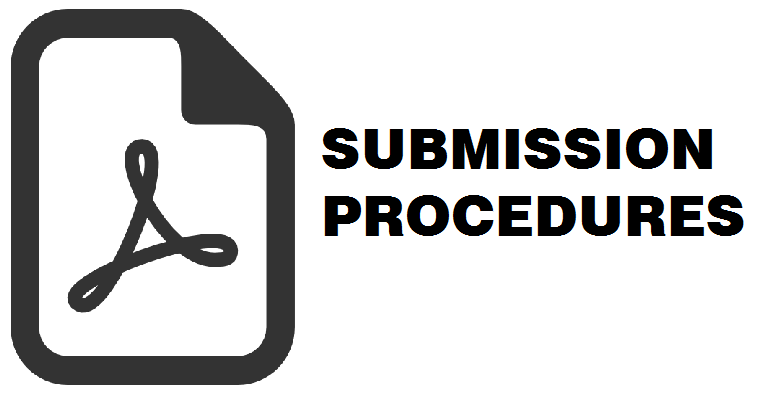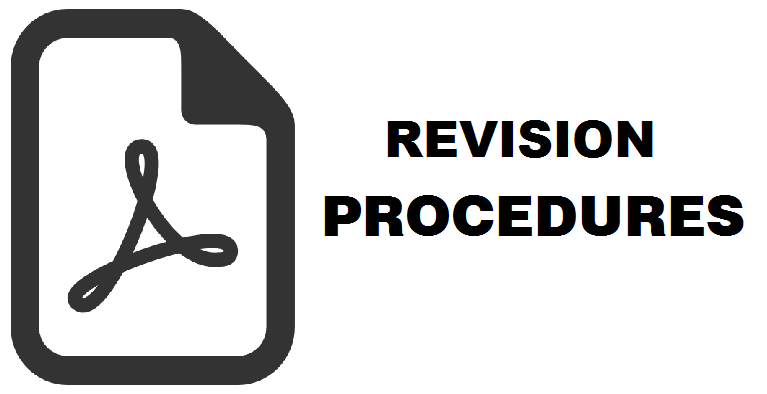Identification of Upwelling Area of the Western Territorial Waters of Indonesia From 2000 To 2017
Eko Supriyadi(1*), Rahmat Hidayat(2)
(1) Marine Meteorology Centre, Meteorology Climatology and Geophysical Agency (BMKG), Jakarta, Indonesia.
(2) Department of Geophysics and Meteorology, IPB University, Bogor, Indonesia.
(*) Corresponding Author
Abstract
The Western Waters of Indonesian (WWI) present a diverse interaction of ocean-atmosphere dynamics. One of them represents the event of Indian Ocean Dipole (IOD), El Niño–Southern Oscillation (ENSO), and upwelling. The objective of this study is to determine the dynamics of chlorophyll-a concentration (Chl–a), especially during IOD and ENSO. Also, this study is aimed to examine the temporal and spatial distribution of the upwelling area from 2000 to 2017. The data utilized consisted of Chl–a, wind stress, Sea Level Anomaly (SLA), and Sea Surface Temperature (SST). The technique used to determine the upwelling area was by examining the maximum conditions of Chl–a, the low temperature of SST, and SLA. The results showed the sea surface temperature had a relationship with the concentration of Chl–a. It was obtained if the Directional Movement Index (DMI) and N3.4 (Niño 3.4 Index) moved stably (not too fluctuation) resulting in high concentrations of Chl–a. High standard deviations of SST are recognized around the Sunda Strait (June – October). When the standard deviation of SST is high, there is also a tendency for high Chl–a concentrations, while the results of empirical calculations show that large areas of upwelling occurred in January and September respectively at 12,447.72 km2 and 8,146.20 km2. Based on the results of the analysis, it can be concluded that the upwelling does not only occur at the coastal area of Western Sumatra (coastal upwelling), but it also occurs in the eastern territorial waters of the Indian Ocean. In addition, the upwelling area has the same pattern as the Chl–a concentration in January - October.
Keywords
Full Text:
PDFReferences
Alexander, M. A., Bladé, I., Newman, M., Lanzante, J.R., Lau, N.-C., & Scott, J. D. (2002). The Atmospheric Bridge: The Influence of ENSO Teleconnections on Air–Sea Interaction over the Global Oceans. Journal of Climate, 15(16), 2205–2231.
Allan, R., Chambers, D., Drosdowsky, W., Hendon, H., Latif, M., Nicholls, N., … Tourre, Y. (2001). Is there an Indian Ocean Dipole and is it Independent of the El Niño-Southern Oscillation?. CLIVAR Exchanges , 6(3), 18-22.
Acosta, A.C., Morales, C. E, Hormazabal, S., Andrade, I., & Ramirez, M. A. C. (2015). Phytoplankton Phenology in the Coastal Upwelling Region off Central-Southern Chile (35°S
–38°S): Time-space Variability, Coupling to Environmental Factors, and Sources of Uncertainty in the Estimates. Journal of Geophysical Research: Oceans, 120(2), 813–831.
Baquero-Bernal, A., Latif, M., & Legutke, S. (2002). On Dipolelike Variability of Sea Surface Temperature in the Tropical Indian Ocean. Journal of Climate, 15(11), 1358–1368.
Behera, S. K., Luo, J. J., Masson, S., Rao, S. A., Sakuma, H., & Yamagata, T. (2006). A CGCM Study on the Interaction between IOD and ENSO. Journal of Climate, 19(9), 1688–1705.
BMKG. (2010). Press Release "Kondisi Cuaca Ekstrem dan Iklim Tahun 2010 - 2011".
Bode, A., Varela, M., Prego, R., Rozada, F., & Santos, M. D. (2017). The Relative Effects of Upwelling and River Flow on The Phytoplankton Diversity Patterns in the Ria of a Coruña (NW Spain). Marine Biology, 164(4), 93.
Burchard, H., Basdurak N. B., Grawe, U., Knoll, M., Mohrholz, V., & Muller S. (2017). Salinity inversions in the thermocline under upwelling favourable winds. Geophysical Research Letters, 44(3), 1422-1428.
Cape, M. R., Straneo, F., Beaird N., Bundy R. M., & Charette M. A. (2019). Nutrient release to oceans from bouyancy-driven upwelling at Greenland tidewater glaciers. Nature Geoscience, 12, 34-39.
Chen, G., Han, W., Li, Y., & Wang, D. (2015). Interannual Variability of Equatorial Eastern Indian Ocean Upwelling: Local versus Remote Forcing. Journal of Physical Oceanography, 46(3), 789–807.
Diaz, H. F., Hoeling, M.O., & Eischeid, J. K. (2001). ENSO Variability, Teleconnections and Climate Change. International Journal of Climatology, 21(15), 1845–1862.
Gitelson, A. A., Schalles, J. F., & Hladik C. M. (2007). Remote chlorophyll-a retrieval in turbid, productive estuaries: Chesapeake Bay case study. Remote Sensing of Environment, 109, 464-472.
Hogg, A. M., Spence, P., Saenko, O. A., & Downes, S. M. (2016). The Energetics of Southern Ocean Upwelling. Journal of Physical Oceanography, 47(1), 135–153.
Hu, J., & Wang X.H. (2016). Progress on Upwelling studies in the China seas. Reviews of Geophysics, 54(3), 653-673.
Johnson, R. A, Bhattacharyya G. K. (2010). Statistics Principles and Methods. Sixth edition, John Willey and Sons, USA.
Kumalawati, A. S. (2004). Variabilitas parameter oseanografi dan sebaran klorofil-a di Perairan Nangroe Aceh Darussalam pada Bulan Oktober-November. Institut Pertanian Bogor.
Kumar, G. S., Prakash, S., Ravichandran M., Narayana, A. C. (2016). Trends and relationship between chlorophyll-a and sea surface temperature in the central equatorial Indian Ocean. Remote Sens. Lett. 7(11):1093–1101.
Kunarso, K., Hadi, S., Ningsih, N. S., & Baskoro, M. S. (2011). Variabilitas Suhu dan Klorofil-a di Daerah Upwelling pada Variasi Kejadian ENSO dan IOD di Perairan Selatan Jawa sampai Timor. ILMU KELAUTAN: Indonesian Journal of Marine Sciences, 16(3), 171-180.
Lau, N.-C., & Nath, M. J. (2003). Atmosphere–Ocean Variations in the Indo-Pacific Sector during ENSO Episodes. Journal of Climate, 16(1), 3–20.
Leber, G. M., Beal, L. M., & Elipot, S. (2016). Wind and Current Forcing Combine to Drive Strong Upwelling in the Agulhas Current. Journal of Physical Oceanography, 47(1), 123–134.
Lehahn, Y., Koren, I., Sharoni, S., d’Ovidio, F., Vardi, A., & Boss, E. (2017). Dispersion/Dilution Enhances Phytoplankton Blooms in Low-Nutrient Waters. Nature Communications, 8, 14868.
Lenn, Y.-D., & Chereskin, T. K. (2009). Observations of Ekman Currents in the Southern Ocean. Journal of Physical Oceanography, 39(3), 768–779.
Lopez-Lora, M., Chamizo, E., Rozmaric, M., & Louw, D. C. (2019). Presence of 236U and 237Np in a marine ecosystem: The Northern Beguela Upwelling System, a case study. Science of the Total Environmental. 708, 135222.
Luo, J.-J., Zhang, R., Behera, S. K., Masumoto, Y., Jin, F.-F., Lukas, R., & Yamagata, T. (2010). Interaction between El Niño and Extreme Indian Ocean Dipole. Journal of Climate, 23(3), 726–742.
Nagura, M., & Konda, M. (2007). The Seasonal Development of an SST Anomaly in the Indian Ocean and Its Relationship to ENSO. Journal of Climate, 20(1), 38–52.
Napitu, A. M., Gordon, A. L., & Pujiana, K. (2015). Intraseasonal Sea Surface Temperature Variability Across the Indonesian Seas. Journal of Climate, 28(22), 8710–8727.
Nurdin, S., Mustapha M. A., & Lihan T. (2013). The relationship between sea surface temperature and chlorophyll-a concentration in fisheries aggregation area in the archipelagic waters of spermonde using satellite images. AIP Conf. Proc. 1571(1):466–472.
Nontji, A. (2008). Plankton Laut. Jakarta: Yayasan Obor Indonesia Publisher.
Ogata, T., Nagura, M., & Masumoto, Y. (2017). Mean Subsurface Upwelling Induced by Intraseasonal Variability over the Equatorial Indian Ocean. Journal of Physical Oceanography, 47(6), 1347–1365.
Saji, N. H., & Yamagata, T. (2003). Possible impacts of Indian Ocean Dipole Mode Events on Global Climate. Climate Research, 25(2), 151–169.
Schoot, F. A, Xie, S. P. & McCreary, J. P. (2009). Indian Ocean Circulation and Climate Variability. Reviews of Geophysics, 47(1), 1-47.
Siswanto, E. & Tanaka, K. (2014). Phytoplankton Biomass Dynamics in the Strait of Malacca within the Period of the SeaWiFS Full Mission: Seasonal Cycles, Interannual Variations and Decadal-Scale Trends. Remote Sensing, 6(4), 2718-2742.
Spall, M. A., & Pedlosky, J. (2013). Interaction of Ekman Layers and Islands. Journal of Physical Oceanography, 43(5), 1028–1041.
Susanto, R. D., Gordon, A. L., & Zheng, Q. (2001). Upwelling along the Coasts of Java and Sumatra and its Relation to ENSO. Geophysical Research Letters, 28(8), 1599–1602.
Susanto, R. D., & Marra, J. (2005). Chlorophyll a Variability Along the Southern Coasts of Java and Sumatra. Oceanography, 18(4), 124-127.
Varela, R., Santos, F., Gómez-Gesteira, M., Álvarez, I., Costoya, X., & Días, J. M. (2016). Influence of Coastal Upwelling on SST Trends Along the South Coast of Java. PLoS ONE, 11(9).
Wang, C., Deser, C., Yu, J.-Y., DiNezio, P., & Clement, A. (2017). El Nino and southern oscillation (ENSO): a review. In Coral Reefs of the Eastern Tropical Pacific (pp. 85–106). Springer.
Wieners, C. E., Dijkstra, H. A., & de Ruijter, W. P. M. (2016). The Influence of the Indian Ocean on ENSO Stability and Flavor. Journal of Climate, 30(7), 2601–2620.
Yuliana & Mutmainnah. (2017). Kandungan klorofil-a dalam kaitannya dengan parameter fisika-kimia perairan di Teluk Jakarta, 1(2), 206-213.
Article Metrics
Refbacks
- There are currently no refbacks.
Copyright (c) 2020 Eko Supriyadi, Rahmat Hidayat

This work is licensed under a Creative Commons Attribution-NonCommercial 4.0 International License.
Accredited Journal, Based on Decree of the Minister of Research, Technology and Higher Education, Republic of Indonesia Number 225/E/KPT/2022, Vol 54 No 1 the Year 2022 - Vol 58 No 2 the Year 2026 (accreditation certificate download)
ISSN 2354-9114 (online), ISSN 0024-9521 (print)









